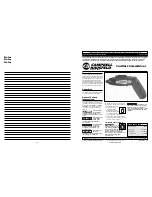
4.
Select
View most recent ipr error messages
from the Kernel Messages Log display. Press Enter.
5.
Find the entry in the log for the drive you want to replace.
6.
Record the location information for the drive.
Note:
The location information is in either of these forms:
0:0:5:0
In this example, 0 is the SCSI host number, 0 is the SCSI bus, 5 is the SCSI target ID, and 0 is
the logical unit number (LUN).
0/00-0E-02
In this example, 0 is the SCSI host number, 00 is the I/O adapter (IOA) SAS port, 0E is the
expander port, and 02 is the device port.
7.
If the drive you want to replace is unprotected or in use, move the data from the drive before
continuing with this procedure. If the drive is in a RAID 0 (non-redundant RAID array), after you
have moved the data, delete the RAID 0 before proceeding.
For PCI-X controller information, see the
PCI-X SCSI RAID Controller Reference Guide for Linux PDF
.
This PDF is available from the SCSI PCI Adapters web page.
For SAS RAID controller information, see the SAS RAID controllers for Linux
8.
Type
iprconfig
on the command line and press Enter.
The IBM Power RAID Configuration Utility display is shown.
9.
Select
Display hardware status
from the IBM Power RAID Configuration Utility display. Press Enter.
The Display Hardware Status screen displays as shown in Figure 24 on page 40 and Figure 25 on
page 41.
Kernel Messages Log
Select one of the following:
1. View most recent ipr error messages
2. View ipr error messages
3. View all kernel error messages
4. View iprconfig error messages
5. Set root kernel message log directory
6. Set default editor
7. Restore defaults
8. View ipr boot time messages
Selection:
e=Exit
Figure 23. Kernel Messages Log
Disk drives or solid-state drives
39
Содержание Power 720 Express 8202-E4B
Страница 2: ......
Страница 10: ...viii Disk drives or solid state drives ...
Страница 226: ...210 Disk drives or solid state drives ...
Страница 227: ......
Страница 228: ... Printed in USA ...
















































